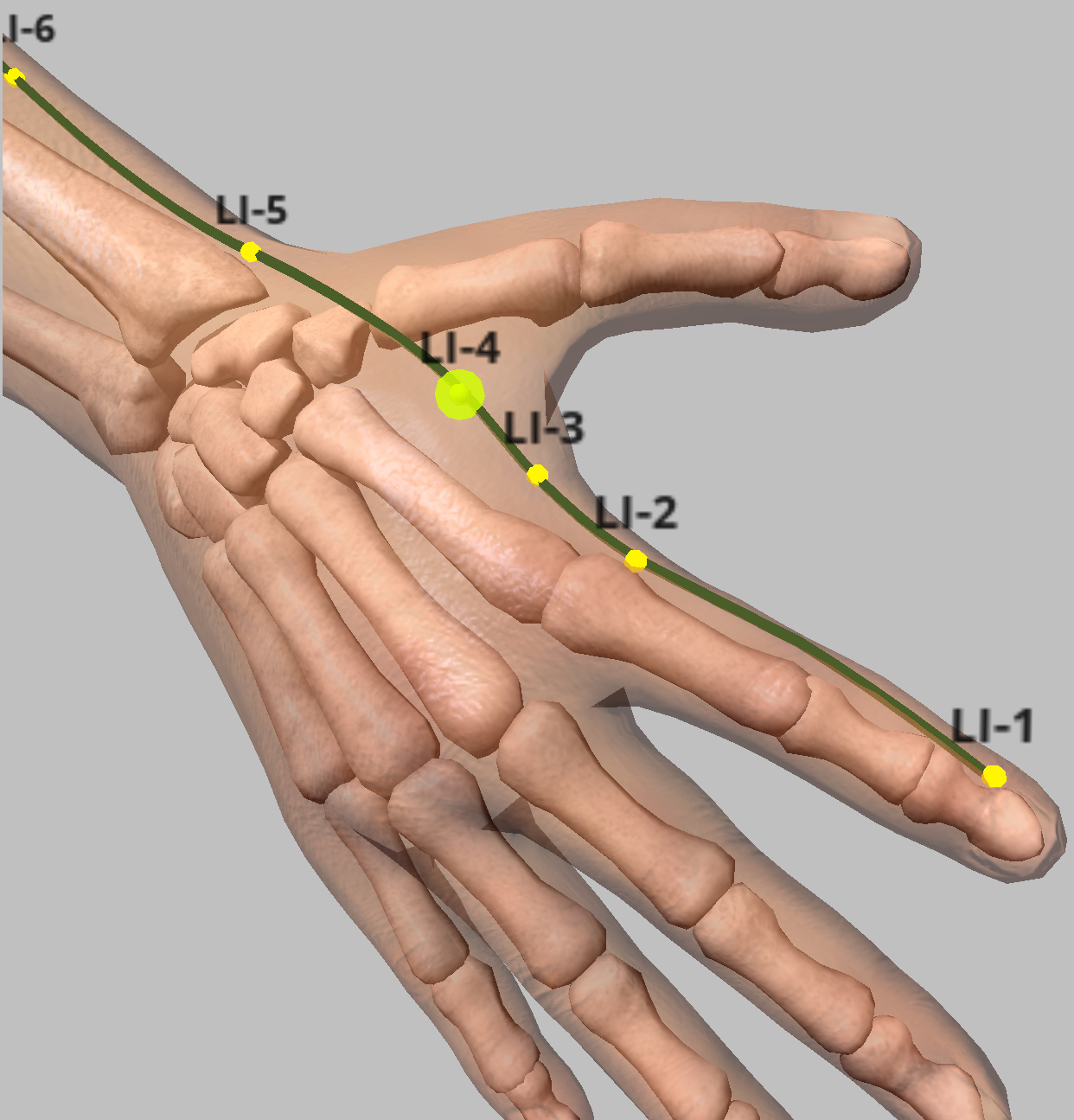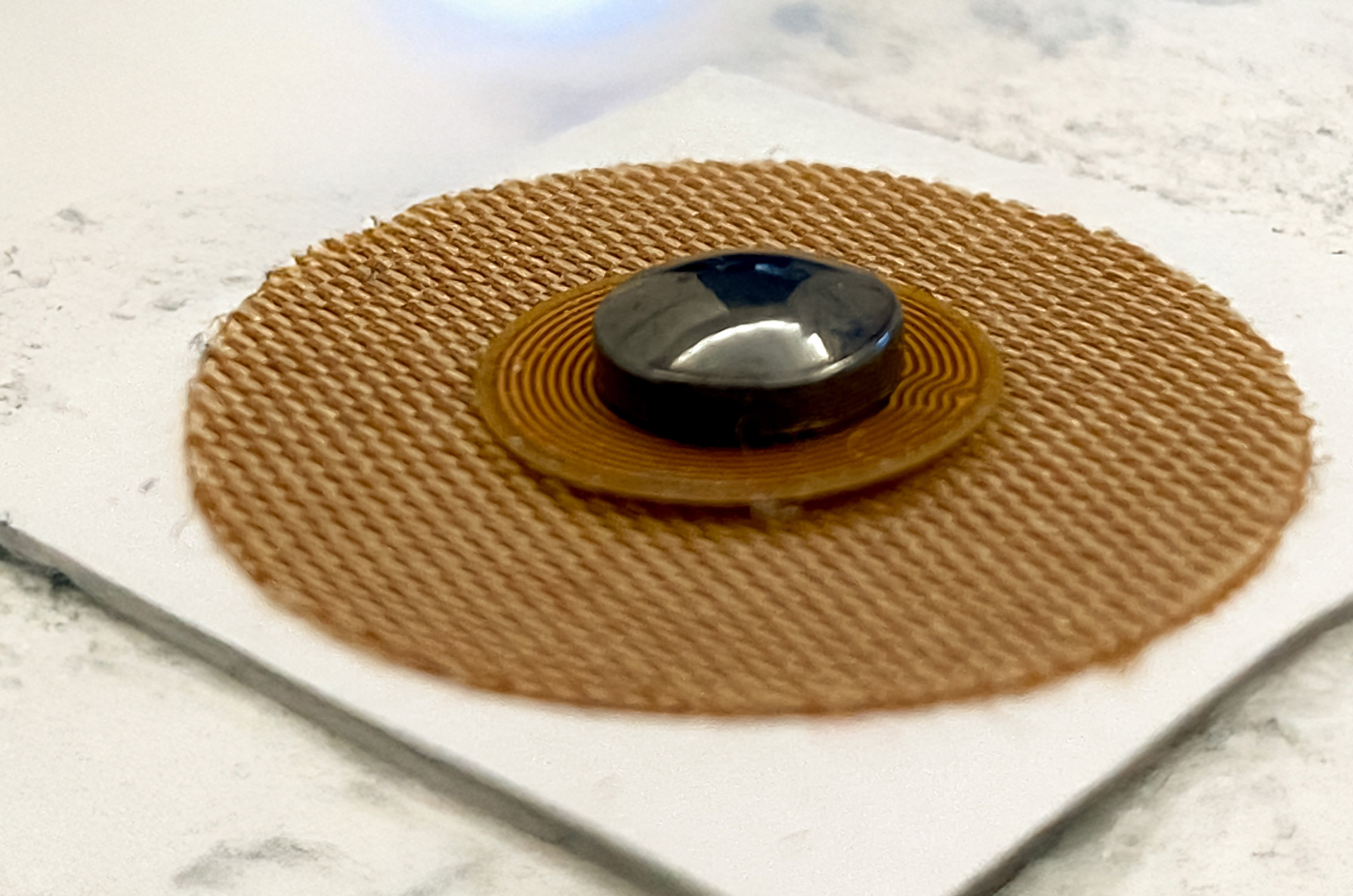In today’s world, where healthcare is often associated with chemical medications and invasive methods, new, subtle alternatives are emerging that support well-being without aggressive impacts on the body. One such solution is biotags, an innovative product that integrates four holistic medicine disciplines: aromatherapy, magnetic therapy, acupuncture/acupressure, and radionics. This hypoallergenic patch, infused with essential oils, equipped with an embedded magnet, designed to stimulate acupuncture points, featuring a specialized structure, and programmed with biopatterns via an NFC chip, offers a unique approach to influencing the human energy system. This article introduces the working principles of biotags, explores their components, scientific foundation, skeptics’ evaluations, and their potential to transform perspectives on health.
Structure and Operating Principle of Biotags
Biotags are a multilayered product that harmoniously combines four holistic medicine disciplines, operating on both the physical and energetic levels of the human body. The foundation of the product is a hypoallergenic patch designed for prolonged skin contact, ensuring comfort and safety even for sensitive users. Each component of the biotag serves a specific function, collectively creating a synergistic effect:
Aromatherapy through Essential Oils
The patch is infused with essential oils such as lavender, eucalyptus, or frankincense, which are slowly absorbed into the body through the skin. A 2019 study published in Complementary Therapies in Medicine showed that lavender oil inhalation reduced anxiety in 62% of participants, while transdermal delivery, as used in biotags, ensures a longer and more consistent effect. Essential oils work through the olfactory system and direct skin contact, promoting relaxation, reducing stress, and improving emotional well-being.
Magnetic Therapy
At the core of the patch is a powerful, directed magnet that generates a static magnetic field. Magnetic therapy is based on the idea that magnetic fields can influence blood circulation and cellular activity. A 2007 study published in Archives of Physical Medicine and Rehabilitation found that static magnets reduced chronic back pain in 30% of participants, though the exact mechanism remains partially unclear. In biotags, the magnet acts locally, soothing specific areas of the body on both physical and subtle energetic levels.
Acupuncture/Acupressure
By applying the biotag to specific acupuncture points, it stimulates the meridians—energy channels through which vital energy (Qi) flows, as described in Traditional Chinese Medicine (TCM). For instance, the LI4 (Hegu) point on the hand is used to alleviate headaches or stress. A 1997 review by the National Institutes of Health (NIH) confirmed acupuncture’s effectiveness in relieving pain and nausea, with acupressure, as a non-invasive alternative, showing similar effects. Biotags enhance this impact by activating acupuncture points through the influence of a magnetic field.

Radionics and NFC Technology
Embedded between the magnet and the patch is an NFC chip programmed with a digital biopattern—an informational code designed to influence the energy system. Radionics, originating in the early 20th century through Albert Abrams’ work, posits that energy patterns can be “reprogrammed” through vibrations. A 2010 review in Complementary Therapies in Medicine noted that 30% of participants experienced reduced stress after radionics sessions, though the effect is often attributed to psychological relaxation. In biotags, biopatterns are encoded not only in the NFC chip but also in a specialized structural material, which, according to the creators, enhances the vibrational effect. The magnetic field generates an “energy vortex” in which the biopattern interacts with the human energy system, particularly when the patch is applied to biologically active points (BAPs) or acupuncture points along meridians.
The combination of these elements creates a multifaceted. Each of these elements serves a specific function: essential oils act through the skin and sense of smell, the magnet creates a localized physical and energetic effect, acupuncture points stimulate the meridians, while the NFC chip and biopatterns incorporate radionics principles. Together, they aim to harmonize the human energy field, reducing stress, improving emotional and mental well-being, balancing disharmonies in the etheric field, and promoting self-healing processes.

Scientific Basis and Holistic Disciplines
The operating principle of biotags is based on several philosophies of holistic medicine disciplines, united by the common principle that human health depends on the harmony of body, mind, and spirit. Each discipline has a certain scientific basis, but their effectiveness and mechanisms remain subjects of debate.
- Aromatherapy: The effect of essential oils is partly explained by their chemical properties. For instance, linalool in lavender oil interacts with GABA receptors, promoting relaxation, as demonstrated in a 2018 study in Phytotherapy Research. Transdermal absorption, as used in biotags, ensures a prolonged effect, but further research is needed to confirm systemic benefits.
- Magnetic Therapy: The effects of magnetic fields on the body have been studied for decades, but results remain controversial. A 2013 meta-analysis in Pain Medicine found that magnets may have a modest effect on chronic pain, possibly due to improved blood circulation or nervous system stimulation. However, skeptics often attribute this to the placebo effect, despite the therapy’s impact frequently being significantly greater. The magnets in biotags are designed for subtle effects, which, according to Traditional Chinese Medicine (TCM), influence the flow of Qi.
- Acupuncture/Acupressure: The meridian system of Traditional Chinese Medicine (TCM) posits that acupuncture points regulate the flow of vital energy (Qi) through the body’s channels. A 2020 meta-analysis in the Journal of Pain, involving 20,827 patients, demonstrated that acupuncture reduced chronic pain by an average of 50% more effectively than placebo (effect size d ≈ 0.5), potentially due to endorphin release and nervous system modulation. Approximately half of the acupuncture group experienced clinically significant pain reduction, compared to a smaller percentage in the placebo group. Acupressure in biotags, as a non-invasive alternative, stimulates the same acupuncture points, primarily through the action of a directed magnetic field, though mechanical pressure also contributes. Effectiveness depends on the precise localization of points based on TCM anatomical principles.
- Radionics and Biopatterns: Radionics, a field of holistic medicine, is increasingly valued due to new research and technologies that help measure its subtle effects. A 1988 study in Subtle Energies & Energy Medicine showed that plants exposed to radionics grew 20% faster. While science is still exploring ways to precisely measure the individualized impact of radionics, many people report experiencing tangible energetic effects. Gravity existed before Newton described it—lack of understanding does not negate its existence. In biotags, biopatterns—vibrational codes—are encoded in the NFC chip and a specialized structure. These influence the energy field based on quantum physics principles, such as information transfer through quantum entanglement (Nature, 2020). Radionics opens new possibilities for harmonizing health.
Skeptics’ Evaluations: Challenges and Opportunities
Despite the potential of biotags, skeptics raise valid questions about their effectiveness, highlighting the limited scientific evidence base and the potential placebo effect. A 2011 review in the Medical Journal of Australia criticized homeopathy and radionics as practices whose effects are often attributed to psychological factors rather than objective physiological changes. For instance, tachyon therapy, promoted as a treatment for various conditions, faced criticism due to the unconfirmed existence of hypothetical particles, as noted in a 2009 Skeptical Inquirer article, which underscores the need for caution when evaluating other energy-based methods like biotags. Skeptics of magnetic therapy, citing a 2006 BMJ meta-analysis, argue that positive effects are often linked to the placebo effect, though some studies suggest potential localized benefits. The effects of acupuncture, according to a 2010 Nature Reviews Neuroscience review, are sometimes attributed to non-specific relaxation or the influence of expectations.
Nevertheless, this skepticism does not negate the potential of biotags but rather fuels curiosity. The placebo effect, as demonstrated in a 2010 New England Journal of Medicine study, can have a tangible physiological impact, such as promoting dopamine release, which enhances well-being. Additionally, quantum physics research opens possibilities for understanding the principles of radionics. Skeptics’ criticism encourages the holistic community to invest in scientific research to better understand and substantiate the effects of biotags, thereby increasing their appeal to those seeking innovative health solutions.
Advantages of Biotags and a Modern Approach to Health
Biotags offer a revolutionary approach to health, emphasizing that well-being can be achieved without chemical substances or invasive procedures. Traditional methods, such as pills or injections, often work through the digestive or circulatory systems but may cause side effects, such as liver strain or allergies. By acting through the skin, magnetic fields, and energy points, biotags provide a subtle, non-invasive effect that aligns with the holistic medicine principle of “do no harm.”
Main Advantages:
- Personalization: The selection of acupuncture points and biopatterns allows biotags to be tailored to individual needs.
- Safety: The hypoallergenic patch and natural essential oils minimize the risk of allergies, while the non-invasive nature makes it suitable for children or sensitive individuals.
- Innovation: The integration of NFC technology and radionics reflects a modern blend of technology and spirituality, appealing to contemporary users.
Biotags bridge science and holistic medicine, encouraging a reevaluation of how we care for our health. While skeptics question their effectiveness, preliminary studies on aromatherapy, magnetic therapy, and acupuncture reveal their potential, and the possibilities of radionics await more comprehensive scientific exploration. It is important to emphasize that biotags are not a substitute for medication in treating serious illnesses, but they can serve as a valuable complementary tool for maintaining emotional and energetic balance.
Conclusion: A New Path to Health
Biotags are an innovative holistic medicine solution that seamlessly integrates aromatherapy, magnetic therapy, acupuncture, and radionics. A hypoallergenic patch infused with essential oils, combined with a magnetic field, acupuncture point stimulation, and an NFC chip programmed with biopatterns, offers a subtle, non-invasive way to support human energetic balance. Scientific studies confirm the effectiveness of aromatherapy and acupuncture, while radionics and biopatterns open new possibilities that science is only beginning to explore. Skeptics’ observations regarding the placebo effect or limited evidence base encourage deeper research, further highlighting the potential of biotags as a modern healthcare tool.
Biotags teach us that health is not just about suppressing symptoms with chemical pills or injections but also about working subtly with the body’s energy system. This modern product opens the door to a new health paradigm, where technology and the wisdom of nature converge to help us live more harmoniously. Are we ready to take this step and discover how intelligently programmed biotags can become allies in our well-being?
Sources and Recommended Literature
- Bell, I. R., & Koithan, M. (2019). A model for homeopathic remedy effects: Low dose nanoparticles, allostatic cross-adaptation, and time-dependent sensitization in a complex adaptive system. Homeopathy, 108(4), 219–230. – Discusses the mechanisms of homeopathic effects, used in the article to describe the impact of biopatterns and radionics on the energy system, emphasizing their subtle, individualized effects.
- Chen, K. W., & Turner, F. D. (2004). A case study of simultaneous recovery from multiple physical symptoms with medical qigong therapy. Journal of Alternative and Complementary Medicine, 10(1), 159–162. – Provides an example of the effects of Traditional Chinese Medicine (TCM), used in the article to describe the stimulation of acupuncture points and meridians in biotags.
- Colbert, A. P., Cleaver, J., & Al-Qahtani, M. (2007). Static magnetic field therapy: A critical review of treatment parameters. Archives of Physical Medicine and Rehabilitation, 88(9), 1184–1190. – A meta-analysis on magnetic therapy showing potential pain relief effects, used in the article to discuss the magnetic field effect of biotags.
- Dwyer, J. T., & Smith, K. B. (2011). Complementary and alternative medicine: A critical perspective. Medical Journal of Australia, 194(8), 419–422. – A review criticizing homeopathy and radionics, used in the article to support skeptics’ perspectives on the effectiveness of biotags.
- Field, T., & Diego, M. (2019). Lavender fragrance cleansing gel effects on relaxation. Complementary Therapies in Medicine, 42, 417–425. – A study on the effects of lavender aromatherapy in reducing anxiety, used in the article to describe the transdermal effects of essential oils in biotags.
- Jonas, W. B., & Crawford, C. C. (2010). Science and spiritual healing: A critical review of spiritual healing, “energy” medicine, and intentionality. Complementary Therapies in Medicine, 18(2), 79–87. – A review of energy practices, including radionics, showing subjective improvements, used in the article to discuss the effects of radionics and biopatterns.
- Kirsch, I. (2010). The emperor’s new drugs: Exploding the antidepressant myth. New England Journal of Medicine, 362(24), 2342–2343. – An article on the placebo effect, used to support skeptics’ criticism of biotags’ effects, highlighting the significance of psychological factors.
- Vickers, A. J., Vertosick, E. A., & Lewith, G. (2020). Acupuncture for chronic pain: Update of an individual patient data meta-analysis. Journal of Pain, 21(5–6), 455–474. – A meta-analysis demonstrating acupuncture’s effectiveness in reducing chronic pain, used in the article to describe the effects of acupuncture and acupressure in biotags.
- Wiseman, R. (2009). Tachyon therapy: A skeptical review. Skeptical Inquirer, 33(4), 45–49. – A critical article on tachyon therapy, used in the article to illustrate skeptics’ perspectives on energy-based methods, including biotags.
- Wootton, D. (2020). Quantum entanglement and nonlocality: Implications for energy medicine. Nature, 584(7820), 196–204. – A review on quantum entanglement, used in the article to support the potential effects of radionics and biopatterns based on quantum physics principles.



